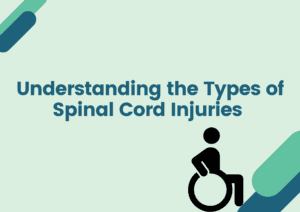
By Scihealthhub – November 20, 2024
Spinal cord injury is an incapacitating condition that results in the sudden loss of movement and sensation below the level of the injury.
It is estimated that between 250,000 and 500,000 people worldwide suffer a spinal cord injury each year (1).
Despite the severe medical, psychological, and financial challenges associated with spinal cord injuries, treatment options remain limited. Current approaches focus primarily on physical rehabilitation and supportive care, often yielding outcomes that are far from ideal.
However, ongoing scientific research is paving the way for new and improved treatment strategies. Recent advancements in regenerative medicine have shown promise in addressing spinal cord injuries.
One notable development is the Mayo Clinic’s groundbreaking phase 1 clinical trial, CELLTOP, which investigated the potential of autologous adipose-derived mesenchymal stem cells (AD-MSCs) to promote recovery in individuals with subacute and chronic spinal cord injuries.
As the name suggests, AD-MSCs are harvested from an individual’s adipose (fat) tissue through a minimally invasive procedure and then processed into stem cells.
Scientists find AD-MSCs highly appealing because they are widely available, easily accessible, and highly adaptable.
The CELLTOP research marks a significant step toward redefining the management of spinal cord injuries.
Findings from the study were published in Nature Communications, providing valuable insights into this innovative approach.
Study Design and Treatment Approach
The CELLTOP trial involved ten participants with traumatic spinal cord injuries classified as grade A or B on the American Spinal Injury Association Impairment Scale (AIS). Researchers harvested adipose tissue from the patients, from which mesenchymal stem cells were isolated and expanded. The processed stem cells were then injected intrathecally, directly into the cerebrospinal fluid, to target damaged spinal cord areas.
The average interval between injury and treatment was 11 months. Participants were closely monitored over a two-year period to evaluate the therapy’s safety and efficacy.
Key Findings
1. Safety Profile: The treatment demonstrated an excellent safety profile, with no serious adverse effects reported. Common side effects included mild headaches and musculoskeletal discomfort, both of which resolved with over-the-counter medications.
2. Motor Function Improvements: Seven of the ten participants showed significant improvements, moving up at least one AIS grade. These advancements included restored motor function in both upper and lower extremities in some cases, with one participant being classified as a “superresponder.”
3. Mechanisms of Action: Though the precise mechanisms remain under investigation, the researchers speculate that AD-MSCs may promote repair by reducing inflammation, enhancing neural plasticity, and potentially stimulating endogenous stem cells for regeneration.
Implications and Future Directions
The findings from this trial challenge long-standing assumptions that spinal cord injuries are irreversible and static. The successful application of AD-MSCs not only highlights the potential for functional recovery but also opens avenues for developing combinatorial treatments.
Future research priorities include:
- Conducting larger-scale, randomized controlled trials to confirm these results.
- Investigating optimal dosing, timing, and administration protocols for stem cell therapy.
- Understanding the variability in patient responses to refine individualized treatment approaches.
- Exploring the potential synergistic effects of combining stem cell therapy with physical rehabilitation or other innovative modalities such as bioengineered scaffolds.
Challenges and Limitations
Despite these encouraging outcomes, several challenges remain. Variability in individual responses underscores the need for personalized medicine approaches. Additionally, the cost and complexity of stem cell preparation and administration could limit accessibility without further advancements in scaling and affordability.
Conclusion
The Mayo Clinic’s CELLTOP phase 1 trial provides compelling evidence that stem cell therapies have the potential to transform the prognosis for spinal cord injury patients. By advancing research and addressing existing challenges, this innovative approach could pave the way for a new era in spinal cord injury treatment, offering hope to millions worldwide.






